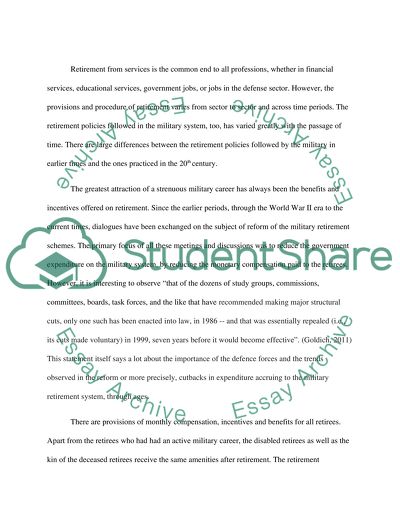Cite this document
(“What are the pros and cons of the new military retirement system Research Paper”, n.d.)
Retrieved from https://studentshare.org/military/1431698-what-are-the-pros-and-cons-of-the-new-military
Retrieved from https://studentshare.org/military/1431698-what-are-the-pros-and-cons-of-the-new-military
(What Are the Pros and Cons of the New Military Retirement System Research Paper)
https://studentshare.org/military/1431698-what-are-the-pros-and-cons-of-the-new-military.
https://studentshare.org/military/1431698-what-are-the-pros-and-cons-of-the-new-military.
“What Are the Pros and Cons of the New Military Retirement System Research Paper”, n.d. https://studentshare.org/military/1431698-what-are-the-pros-and-cons-of-the-new-military.


